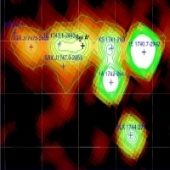ESA Science & Technology - News Archive
News archive
News archive
The investigations of Venus Express following the detection of contamination in the fairing, have so far proven the spacecraft to be in good status.
Published: 27 October 2005
The GEPI laboratory at the Observatoire de Paris is offering an engineering position to work on Gaia-related topics.
Published: 26 October 2005
During the final preparations for the launch of the Venus Express spacecraft by a Soyuz-Fregat launcher, contamination was detected inside the launcher's fairing.
Published: 21 October 2005
The Keighley College STAR Centre (Science, Technology and Aeronautics Regional Centre) is a unique educational facility in the UK which has drawn inspiration from the activities undertaken across the whole of ESA.
Published: 17 October 2005
Published: 17 October 2005
Published: 10 October 2005
In two dedicated papers, INTEGRAL Project Scientist Christoph Winkler presents a selection of scientific highlights achieved during the first two and a half years of Integral science operations.
Published: 7 October 2005
Two space observatories, the NASA/ESA Hubble Space Telescope and NASA's Spitzer Space Telescope, have teamed up to weigh the stars in several very distant galaxies.
Published: 27 September 2005
Published: 27 September 2005
Published: 25 September 2005
Published: 23 September 2005
Published: 21 September 2005
Published: 21 September 2005
The Double Star TC-2 and Cluster satellites have gathered unique data from the biggest starquake on a neutron star ever recorded, enabling the discrimination between current theories on the origin of these type of events.
Published: 21 September 2005
Members of the scientific community in all of the ESA member states are invited to respond to the Announcement of Opportunity to submit proposals for observations to be performed with ASTRO-F, the Japanese infrared all-sky survey mission.
Published: 21 September 2005
Observations with the Hubble Space Telescope have revealed the presence of a compact disk of young stars at the heart of the Andromeda galaxy surrounding the central black hole.
Published: 20 September 2005
A large study of quasars conducted with Hubble and the VLT has resulted in the first observation of a unique type of quasar, one with no readily observable host galaxy.
Published: 14 September 2005
In an article to be published in the Astrophysical Journal, Bélanger et al. report on the nature of a hard X-ray source located near and associated with the black hole at the centre of our galaxy.
Published: 14 September 2005
The Victoria Space Science Education Centre was built for the purpose of the promotion of science. The Centre will allow students to be immersed in a space science mission to Mars and to work as scientists on the ISS.
Published: 13 September 2005
Published: 6 September 2005
—
20 Items per Page









